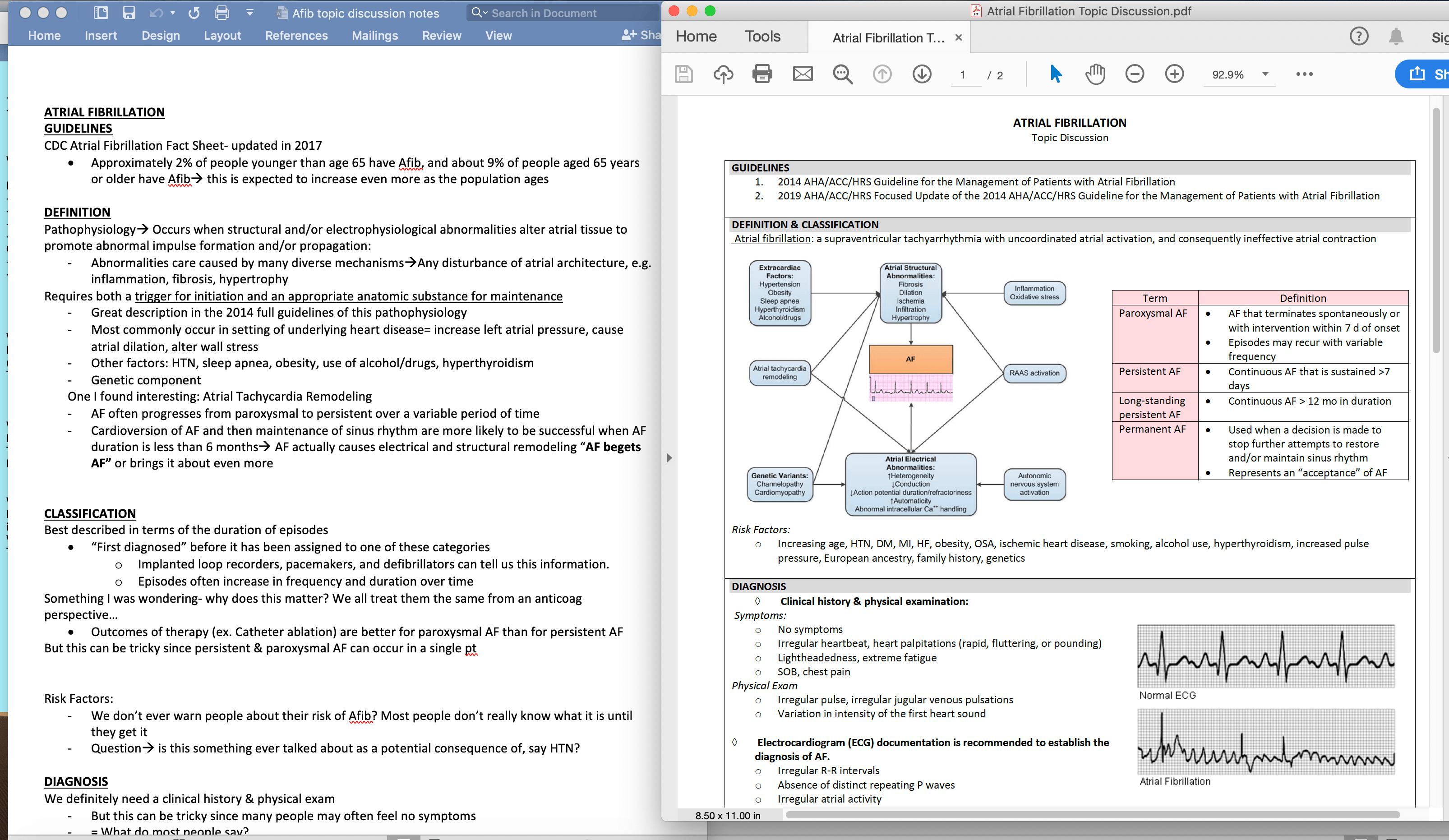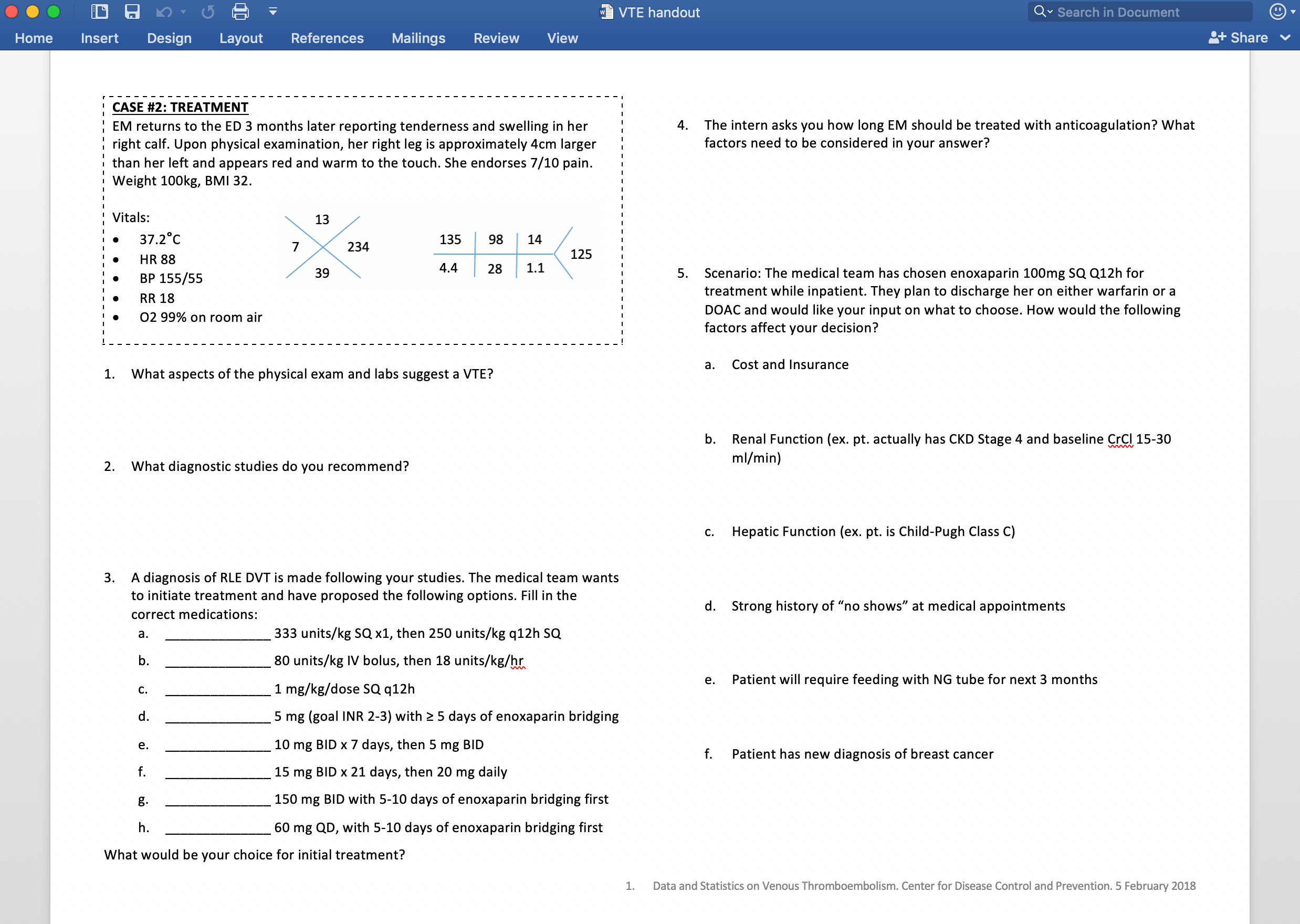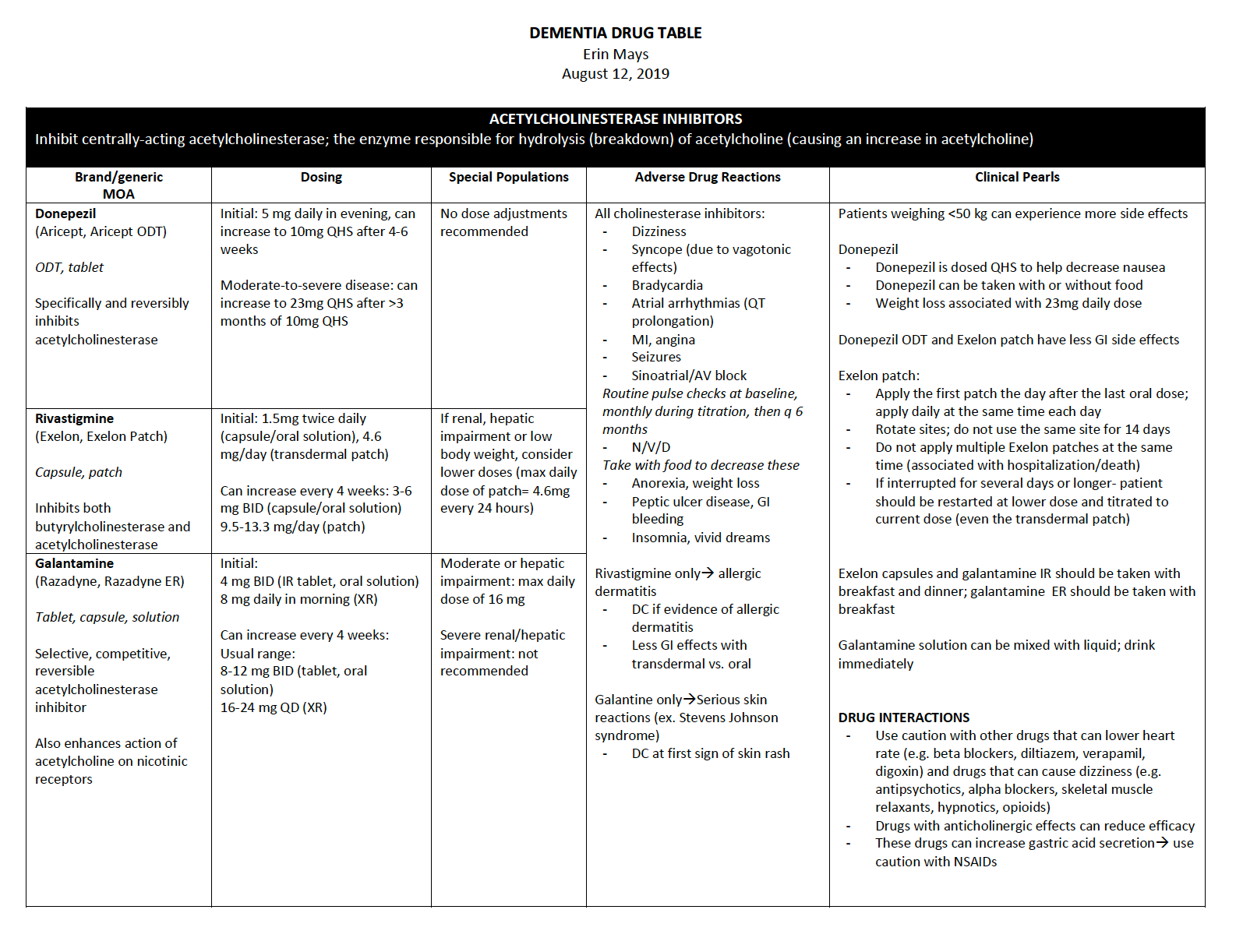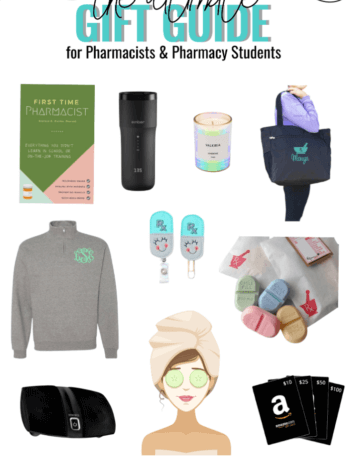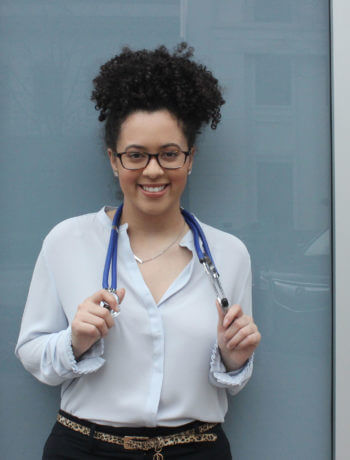A very common thing that pharmacist preceptors will ask students to do on pharmacy rotations is to prepare and lead a topic discussion. They are such a common staple in academic medical teaching. If you are a pharmacy or medical student, get ready to do a lot in your career as a student and resident. I have sat in on multiple topic discussions, and already have led several during my internship and on rotations. Sometimes it will be just you and your preceptor, and other times there may be other students, residents, and preceptors there too.
Being assigned a topic discussion with no other instructions can be kind of overwhelming. Today, I am sharing 5 tips that can hopefully help you when preparing for your next topic discussion!
KNOW YOUR AUDIENCE
Like I mentioned above, you may give your topic discussion to only your preceptor, or to a larger group. Your audience absolutely determines the format of your topic discussion! If there are going to be other students there, whether the same age or younger, I almost find it easier since you can take on the role of “teaching” them about your topic. You can structure your topic discussion to be an interactive worksheet or turn it into a patient case (see more in Tip #3).
However, if it is going to be just you and your preceptor, please don’t make them complete a blank worksheet or ask them to do complete a patient case! Instead, you can lead the discussion by walking through the disease state from EpidemiologyàTreatment (see more in Tip #4) and asking them more clinical and “real practice” questions along the way. If you are unsure of who your audience will be, definitely ask before you start preparing!
HANDOUT, HANDOUT, HANDOUT
You will NEVER regret preparing a handout for your topic discussion, but I’m almost positive you will regret it if you don’t make one. For one, making a handout gives your audience something to look at and follow along with (so they aren’t just looking at you the whole time)! It also makes it much easier for you to stay organized and on track, even if the discussion gets off-topic for a few minutes when someone asks a question. Keep your handouts clean, simple, and SHORT! My gold standard is one page, front and back, plus a separate drug table. Obviously if there are patient cases, it may end up being longer and that’s okay! Make sure you print out the handouts beforehand, and that you have MORE than enough for your expected audience (no one wants to be the person who didn’t bring enough handouts so people have to share).
However, make sure you have more information prepared then just what’s on your handout. You don’t want to just be reading to your audience off the page that everyone has in front of them. In fact, make a separate document for yourself that has the extra information that you want to say. That’s what I did in the Atrial Fibrillation topic discussion I gave in May. I would have my notes and the first page of the topic discussion side by side when leading the discussion. Sometimes it may also make sense to include a drug table!
MAKE IT INTERACTIVE!
Imagine how bored you would be if you were forced to sit for 30 minutes to an hour and listen to someone else just talk nonstop about a disease state and its drug therapies? Topic discussions are meant to be interactive! Like I mentioned before, how you do that depends on your audience. If there are other students there, make them work! Give them a drug table with blanks or organize the entire topic discussion around patient cases (that’s what I did in the VTE topic discussion I gave on my Internal Med rotation).
If the topic discussion is going to be you and those older than you, like a resident and a preceptor, make it interactive by preparing questions that only THEY can know the answer to. My go-to question is something like, “Does this guideline recommendation actually make sense in real clinical practice?”, or “Do you ever see this third-line therapy actually being used in the patients you see?”. Asking questions like these gives you a break from talking, engages your preceptor, and also teaches you something, so huge win!
There are multiple ways to make a sit-down, table topic discussion interactive, so don’t be afraid to have some fun with it! Your audience will appreciate it!
BE ORGANIZED
Organization while leading a topic discussion is KEY, both for you and your audience. I find it really helpful to structure your discussion in a way that you would normally learn or “map” a disease state. Starting from top to bottom, a typical flow starts with Background and Pathophysiology, then goes to Clinical Presentation and Diagnosis, and finally to Treatment. As pharmacists, the Treatment is what we tend to focus the most on! I included a screenshot below of a topic discussion I led on Dementia, so you can see the order that I used. I almost ALWAYS include a drug table as an addendum to my handout. After all, we care the most about the drugs! Also, making a drug table can help you prepare for a lot of the questions your preceptor will be asking you!
LEARN FROM THE EXPERTS
Like I mentioned above, you will probably sit in on a lot of topic discussions before you will be leading one. As a younger student, seek those opportunities out! You know that you will be in their shoes one day and will be doing the same thing. Use those early topic discussions to learn what you like and what you don’t like as an audience member. I remember on my first pharmacy rotation, I sat in on a topic discussion lead by a resident and was super impressed. I saved that handout and have used it since this day as a guide for my topic discussions. Never say no to attending someone else’s topic discussion who you respect and admire! Save those handouts and you will be that much more prepared when it comes time for your turn.
Hopefully these 5 tips will help you out when it comes time to prepare and lead your first topic discussion!
MEET ERIN

You may also like: 5 Tips to Help You Stay Motivated in Pharmacy School, What to Do if You Fail A Class in Pharmacy School, and The Subtle Art of Acing Your Pharmacy Rotations



